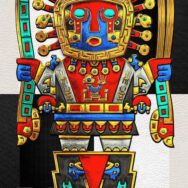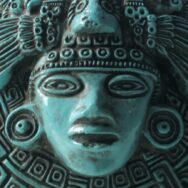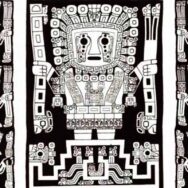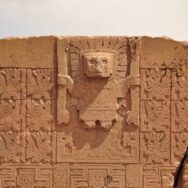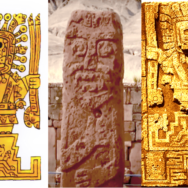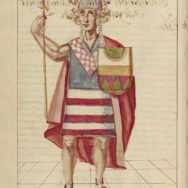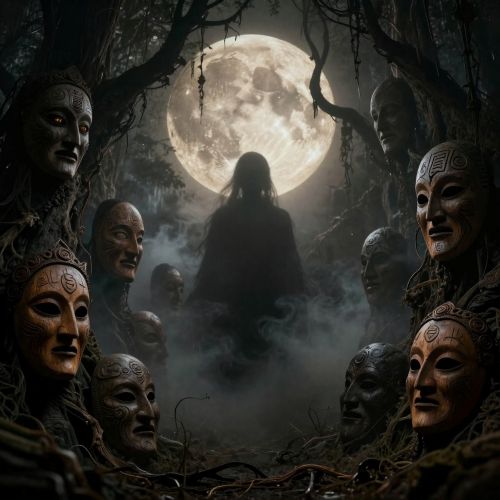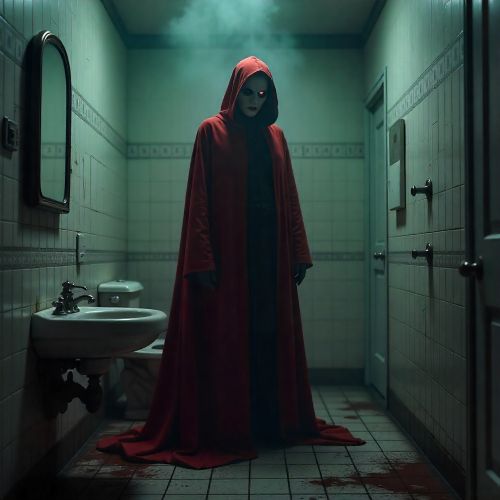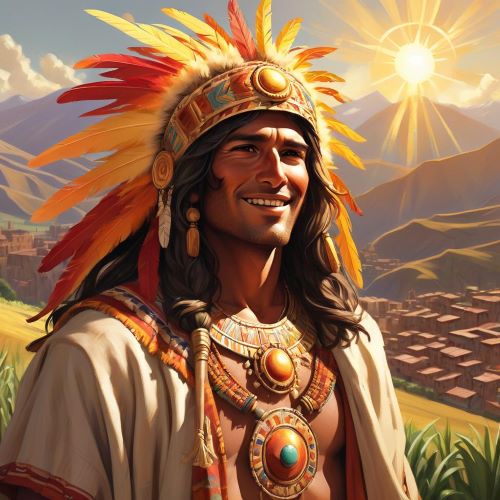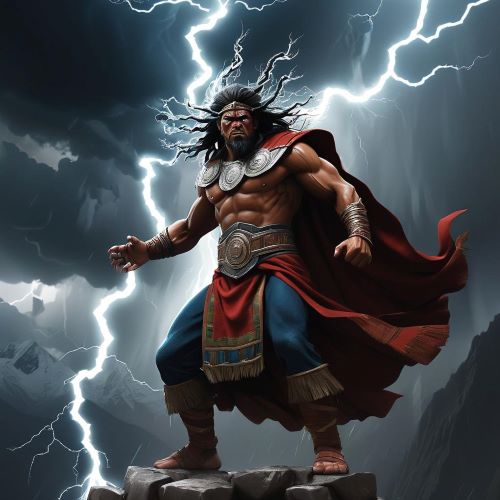Viracocha : The Hidden Creator Who Shaped the Andes
Listen
At a glance
| Description | |
|---|---|
| Origin | Inca Mythology |
| Classification | Gods |
| Family Members | N/A |
| Region | Peru, Bolivia |
| Associated With | Floods, Creation |
Viracocha
Introduction
In the cosmology of the Andean highlands, the name Viracocha commands respect as the primordial source of creation, civilisation, and cosmic order. Often regarded as the great creator deity of the pre-Inca and Inca cultures, Viracocha emerged from the waters of Lake Titicaca (or from a cave such as Pacaritambo) in an era of darkness, and brought forth the sky, the earth, the sun, moon and stars, as well as humanity and the arts of civilisation. After this act of creation he wandered the world teaching mankind before departing across the sea, leaving the day-to-day running of the cosmos to lesser deities. His role intimates both transcendence and immanence: distant yet foundational, creator yet teacher.
Physical Traits
Although Inca sources are not richly detailed on his visual iconography, Spanish chroniclers and later scholarship characterise Viracocha in one recurring image: an old bearded man, clothed in a long robe and carrying a staff, emerging from water. The beard is interpreted as a symbol of a water-god, and his attire communicates dignity and divine wisdom. He is sometimes depicted rising from Lake Titicaca or walking on the Pacific sea, symbolising both origin and departure. In Andean iconography his figure may correspond with the so-called “Staff God” motif linked to the Tiwanaku tradition, though identification is tentative. His appearance blends elements of ancient Andean symbolism (foam, water, sky) with later colonial descriptions that might reflect European influence; nevertheless, the consistent motifs are his emergent form from water, his beard (rare among native deities), and his staff.
Family
Viracocha occupies a foundational position rather than a genealogical one. He is often described as the “father” of other gods, or as their progenitor, but not in the sense of a mythic lineage rich with siblings and children in the way of many pantheons. According to tradition, after creating humanity and the cosmos, he entrusted the running of the world to other deities such as the sun god Inti and the moon goddess Mama Quilla. While in one version of the myth he transforms the first, giant human race (made of stone) into lifeless rock and then fashions a new humanity from smaller stones, there is no consistent record of Viracocha’s wife or offspring in early Andean sources. He is better viewed as the originator of divine and human order rather than as part of a divine family tree.
Other Names
The deity’s name appears in numerous variant forms: Huiracocha, Wiraqoca, Wiro Qocha, Tiqsi Wiraqutra, Con-Tici Viracocha, among others. These variants reflect regional dialects (Quechua, Aymara), Spanish transliteration, and titles rather than strictly separate names. For example, “Tiqsi” means “beginning” or “foundation,” and “Wiraqoca” can be rendered as “foam of the sea / lake.” Some epithets emphasise his teacher or instructor role: for example “Wiraqoca Pacayachachi” (instructor of the world). Because the god’s sacred name was often not spoken, alternative descriptive names became common in Inca tradition.
Powers and Abilities
Viracocha’s powers are manifold and supreme within the Andean cosmos. He is attributed with the creation of the universe: the sky and earth, the sun, moon and stars, and all living beings. He is said to have crafted the first race of giants (or monstrous humans) who displeased him, then sent a great flood to destroy them and re-made humanity from smaller stones. He brought civilisation—teaching agriculture, weaving, building, and moral order—to human beings as he wandered the land. As creator, he is also associated with the waters (emerging from Lake Titicaca) and with the sea (departing across the ocean). After his departure, he delegates the tensional tasks of nature and social order to other gods, but remains the distant sovereign of creation. His staff and robe serve as narratives of authority and instruction; his beard highlights the unusual iconographic trait among Andean deities. He is both the architect of existence and its moral teacher.
Modern Day Influence
Though the Inca Empire has long fallen, Viracocha endures in modern scholarship, art and popular culture. Archaeologists and historians reference him as evidence of pre-Inca religious continuity, especially in Tiwanaku and early Andean civilizations. Tourist literature in Peru highlights legends of Viracocha at Lake Titicaca and Machu Picchu; his image is invoked in cultural heritage and colonial-era chronicle retellings. In new myth-reimaginings and world-building (such as for your KCHRI Universe, Nitten) Viracocha can serve as a prototype of the cosmic Creator, a figure of transition between primal chaos and ordered civilisation. His motif of emergence from water, transformation of humanity, and departure across the sea offers fertile ground for adaptation—whether as an ancient god sleeping beneath the waves, or as the origin of trans-Andean trade and culture. Contemporary Indigenous revivals, educational curricula in Peru and Bolivia, and even New Age mythologies engage with Viracocha as symbol of creation, culture and original authority.
Related Images
Source
Berger, A. (2021). The myth of Viracocha. Research Starters – EBSCO. Retrieved from https://www.ebsco.com/research-starters/religion-and-philosophy/myth-viracocha EBSCO
“Viracocha.” (n.d.). In Britannica. Retrieved [date] from https://www.britannica.com/topic/Viracocha Encyclopedia Britannica
“Viracocha.” (n.d.). In World History Encyclopedia. Retrieved [date] from https://www.worldhistory.org/Viracocha/ World History Encyclopedia
“Viracocha and the legendary origins of the Inca.” (n.d.). ThoughtCo. Retrieved [date] from https://www.thoughtco.com/viracocha-and-legendary-origins-of-inca-2136321 ThoughtCo
“Viracocha.” (n.d.). Fiveable – Key Terms (Honors World History). https://library.fiveable.me/key-terms/hs-honors-world-history/viracocha/ Fiveable
“Viracocha – Gods & their religion.” (n.d.). TreXperience Peru. Retrieved [date] from https://trexperienceperu.com/blog/inca-gods TreXperience
“Viracocha – The legend of Viracocha.” (n.d.). LimaEasy. Retrieved [date] from https://www.limaeasy.com/peru-guide/history-of-peru/peruvian-legends-myths-tales/the-legend-of-viracocha/ limaeasy.com
Frequently Asked Questions
What was Viracocha the god of?
Viracocha is the great creator deity in the pre-Inca and Inca mythology in the Andes region of South America. He is also known as Huiracocha, Wiraqoca, and Wiro Qocha. He was considered the creator god and was the father of all other Inca gods. It was he who formed the earth, heavens, sun, moon, and all living beings. Viracocha was worshipped as god of the sun and of storms
Is Viracocha male or female?
According to the myth, Viracocha had a human appearance and was generally considered as bearded. Pedro Sarmiento de Gamboa wrote that Viracocha was described as “a man of medium height, white and dressed in a white robe like an alb secured round the waist and that he carried a staff and a book in his hands”
What are the powers of the Viracocha god?
Viracocha was the supreme god of the Incas and was considered the creator god. He was the father of all other Inca gods and it was he who formed the earth, heavens, sun, moon, and all living beings. According to the myth, Viracocha created the universe, sun, moon, and stars, time (by commanding the sun to move over the sky) and civilization itself. He was worshipped as god of the sun and of storms. Viracocha was also seen as the creator of all things, or the substance from which all things are created, and intimately associated with the sea
How was Viracocha born?
According to the myth, Viracocha rose from Lake Titicaca (or sometimes the cave of Paqariq Tampu) during the time of darkness to bring forth light. He was considered the creator god and was the father of all other Inca gods. It was he who formed the earth, heavens, sun, moon, and all living beings.
Was Viracocha the sun god?
Viracocha was the supreme god of the Incas and was considered the creator god. He was the father of all other Inca gods and it was he who formed the earth, heavens, sun, moon, and all living beings. According to the myth, Viracocha created the universe, sun, moon, and stars, time (by commanding the sun to move over the sky) and civilization itself. He was worshipped as god of the sun and of storms. However, Viracocha was immediately followed by Inti, the Sun.


